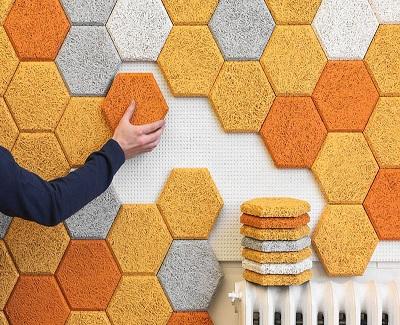Sound is wonderful, beautiful and a collection of harmonious notes. But sounds we don’t want to hear, in the wrong place, at the wrong time is simply noise, which can be a source of nuisance at times. If you are plagued by the noise problem, the thorough solution to this problem is to invest in insulation or Structural Insulated Panels, as it not only reduces energy costs but also acts as a buffer to muffle out noise or simply kill the sound at its source, as an alternative solution. But majority of the time the simpler solution won’t work as blocking out noise isn’t so simple and straight forward.
If you live near a construction site or club, then it could spell big trouble for you. Or maybe it’s the opposite of this case, you could have a noisy occupation or hobby- you might be a practicing musician or a DJ- and you want to spare the people around you from suffering sounds you make in your testing phase. No matter what the reason, your thoughts have probably turned to soundproofing. Just what is it and how does it work? Let’s just briefly skim over it.
The concept of sound-proofing
Sound is a kind of energy that’s produced when things vibrate. The energy has to go somewhere, so it travels outwards, away from the source, making objects and the air around them vibrate in a symphony, which eventually reaches our ears and we classify it as a sound.
More importantly, understanding how the soundwaves travel through the air is the key to stopping it, but that’s easier said than done. One of the key reason we struggle with sound proofing is due to the misconception of considering both light and sound as a same sort of energy. Although both energies travel in a wave form, light is composed of shorter wavelengths and is far quicker to channel out. Sound waves on the other hand are composed of longer wavelengths. At this point it would be prudent to point out that it is far easy to make your house pitch black than making it soundless. Long wavelength sounds can bend (diffract) around corners and can wiggle through the tiniest openings. Moreover, where light energy passes through a handful of surfaces, sound energy gladly passes through most solids and can emerge out as even louder from the other side.
Apparently, there are three rudimentary ways to stop the sound energy
- Turn off the source
- Increase your distance from it
- Stop the sound waves from entering your ears
As we have established the first two of these three methods aren’t likely to work. However, blocking the sound waves actually holds the merit. But don’t be fooled by the simplicity of the statement, you will need to block the sounds in more drastic ways.
Next up, stopping the sound in its tracks
Suppose you are sitting in a room preparing to go about your daily routine but wondering about how to stop the outside noise? Think about the sound waves, they travel through the air, hit the walls and windows of your home and make them vibrate. The energy is being transmitted though the materials. That’s how sound gets in the house from outside. You can see several ways to solve this problem, but the most obvious solutions can be classified under following processes:
- Noise Reduction
- Absorbing and Dampening
- Decoupling

Last but not the least, Solutions!
If you want to make your room a little quieter rather than go to extreme lengths like building a room within a room; then making an ordinary room quiet, features a simple-two prong strategy through a combination of noise reduction and absorption techniques.
The first and the obvious step is to tackle the routes by which sound enters the room. If you have not thought about insulation or Structurally Insulated Panels, this might be the best time to reconsider your decision. After the walls and roof, your next culprit could be doors and windows. Make sure they are shut tight and locked. Install draft-proofing or caulking and use draft excluders. Double and triple glazing can provide a relief in certain situations. Do you have an open chimney, which is not in use? Consider blocking it. If you really are serious about soundproofing your house, then you need to systematically work out every little detail around your house, identifying every possible access point where sound can get in and take appropriate steps to block that path.
Once you have reduced the incoming sound -with the use of R-Control SIP panels or double glazing- as much as you can, you could try altering the interior of your house a little bit. It is a known fact that carpets work better than wooden floors in muffling the noise, but rugs can be a treat too. Soft furnishing can be a great aid in absorbing the unwanted noise effectively. And obviously, curtains are good at absorbing sounds. Thermal curtain linings and blackout curtains can significantly improve soun insulation for problems like street noise.
